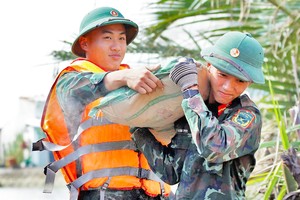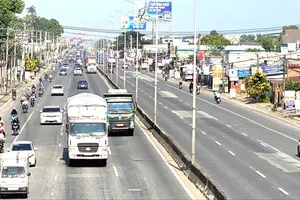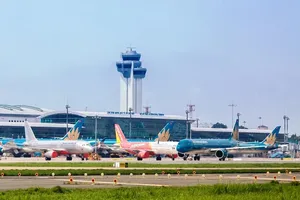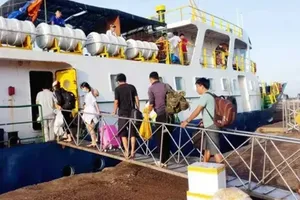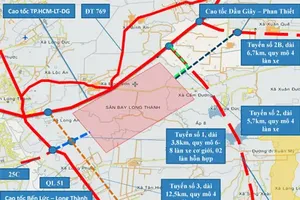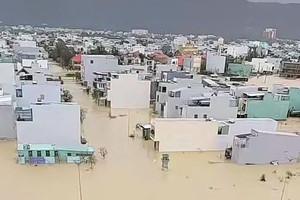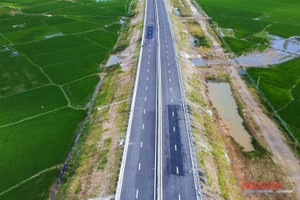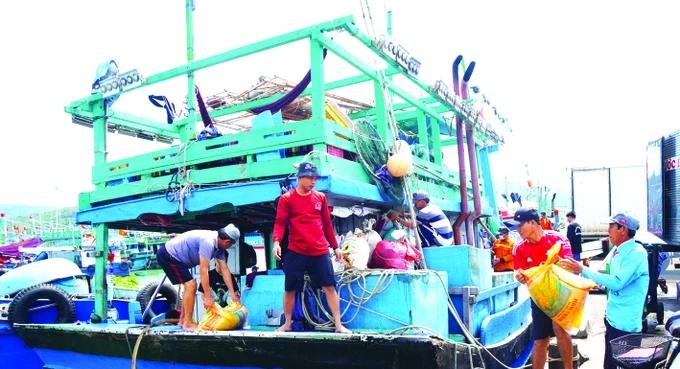
The Central region is currently home to fishing ports that meet the standards to combat illegal, unreported and unregulated (IUU) fishing. Authorities now monitor fishing vessels as they depart and return to port.
From the early hours at Quang Phuc fishing port in Ba Don Town of Quang Binh Province, six fishing vessels approached the port's management board to seek approval for setting sail. Captain Nguyen Thai Son, owner of the fishing boat QB-98863, was finalizing departure procedures. He remarked, ‘Previously, we would simply head out to sea and start fishing. Now, we must adhere to designated routes and fishing grounds’.
Director Nguyen Huu Sau of Quang Phuc fishing port informed that all vessels leaving the port have gone through the inspection process and certification of fishing vessels leaving the port. When arriving ashore to sell fish, all vessels follow a four-step process including inspecting the vessel upon arrival, overseeing the unloading of aquatic products, certifying the vessel's entry, and issuing a receipt for the unloaded catch.
According to Mr. Sau, a mandatory recording of excess catch is required, coupled with logbook inspection. Regulatory discretion will determine the disposition of the surplus catch, with commercialization contingent upon adherence to authorized fishing ground regulations, and penalties imposed for non-compliance.
In Da Nang, Nguyen Lai, Head of the Tho Quang Fishing Port and Lock Management Board in Son Tra District, said that vessels entering and leaving the port must declare before they can carry out the next procedure.
The implementation of the electronic Catch Documentation and Traceability (eCDT) system mandates that the management board only authorizes sea travel for fishing vessels that have completed electronic declarations. Currently, full compliance with this procedure has been achieved, with 100 percent of fishing vessels having fulfilled the requirements. Upon port entry, vessels are required to complete comprehensive declarations prior to engaging in fish market exploitation and trade.
Along the South Central Coast, numerous fishing ports are emerging as the backbone in the fight against illegal, unreported and unregulated (IUU) fishing, working towards having the "yellow card" warning lifted for their seafood exports.
Mr. Duong Thanh Nam, a control officer at Quy Nhon fishing port in Binh Dinh Province, continuously recorded the license plates of offshore fishing vessels that had just arrived to sell fish.
Mr. Nam explained that offshore fishing vessels are required to notify the port at least one hour before arrival to facilitate a proactive reception. Upon entry, the port conducts a thorough inspection of records related to volume, output, and fish species to verify compliance with export eligibility standards.
Additionally, strict regulations are enforced to control the species and sizes of fish that may be legally harvested, ensuring the exclusion of prohibited species such as sharks and sea turtles. Furthermore, the port reviews the fishing logbook to confirm that fishing activities have been conducted within authorized fishing grounds.
Nguyen Thai Son, captain and owner of fishing boat QB-98863 in Ba Don town revealed that when entering Quang Phuc port, he received a clear exit document, assuring fishermen that they were fishing in compliance with anti-IUU regulations. If the boat lost satellite contact for over 6 hours, fishermen were provided a free high-frequency device to explain to the authorities, allowing fishermen to feel more secure.
Meanwhile, Mr. Nguyen Phuong Binh from Tho Quang Ward, Son Tra District, Da Nang, emphasized the importance of a systematic, scientific, and responsible approach to managing offshore fishing to ensure the industry's long-term sustainability.
Mr. Binh's two fishing boats, with engine capacities of 825CV and 865CV, are operating in the Hoang Sa fishing ground off the coast. The boats, registered as DNa-910195 TS and DNa-91982 TS, are both equipped with journey monitoring devices. The declaration of information about fishing vessels arriving at and departing from ports, and tracing the origin of aquatic products has been carried out through the “CDT VN” application and has been disseminated to fishermen, gradually replacing traditional documents.
"Previously, fishermen had to spend considerable time searching for fishing grounds with abundant resources, leading to fuel wastage. However, with the assistance of journey monitoring devices and information support from the Department of Fisheries, vessels can now efficiently identify suitable fishing areas, reducing costs and enhancing fishing productivity," said Mr. Nguyen Phuong Binh.
A mandatory reporting protocol, implemented one hour prior to vessel departure from La Gi fishing port in Binh Thuan Province, requires captains and owners of fishing vessels to report to the management board and relevant authorities, ensuring strict compliance with the activation of the Vessel Monitoring System (VMS) before commencing sea operations. After the vessel arrives at the port, fishermen voluntarily submit their fishing logs, fishing reports and purchasing logs to the fishing port management board for monitoring.
Fisherman Le Van Tinh of La Gi Town revealed that; ‘At first, people get confusing at the new regulations, but later thanks to the guidance of the fishing port management board, the fisheries control force, and the border guard force, fishermen understand how to complete the procedure and they carry out it smoothly now. The fishing process at sea is safe, and there is no longer any fear of illegal fishing vessels operating in the wrong fishing grounds. This is a big change for fishermen in the fight against IUU fishing.
